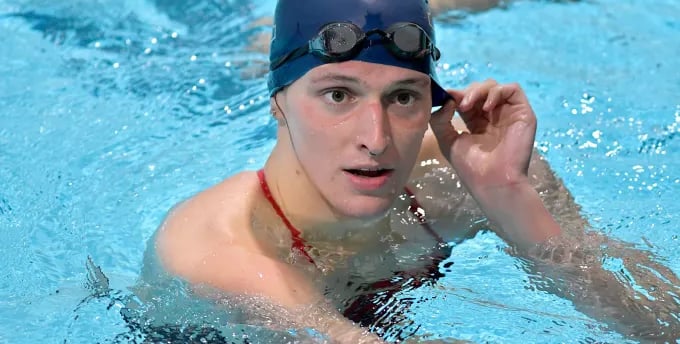
Trump Signs Executive Order Banning Transgender Athletes from Women’s Sports
February 5, 2025 In a move that has ignited fierce debate across the nation, President Donald J. Trump signed an executive order today titled “Keeping Men Out of Women’s Sports,” effectively banning transgender athletes from participating in women’s sports categories. The order, signed in the East Room of the White House, marks a significant shift in federal policy and fulfills one of Trump’s key campaign promises from the 2024 election.
ThatGuy@ZonDeet.com
2/18/20255 min read


Trump Signs Executive Order Banning Transgender Athletes from Women’s Sports
By Jane Smith, Senior Political Correspondent
February 5, 2025
In a move that has ignited fierce debate across the nation, President Donald J. Trump signed an executive order today titled “Keeping Men Out of Women’s Sports,” effectively banning transgender athletes from participating in women’s sports categories. The order, signed in the East Room of the White House, marks a significant shift in federal policy and fulfills one of Trump’s key campaign promises from the 2024 election.
The Executive Order: Key Points
The executive order, which Trump administration officials describe as a measure to protect women’s rights and opportunities in athletics, contains several far-reaching provisions:
It mandates the Department of Justice (DOJ) to enforce Title IX rules in a way that prohibits transgender women and girls from competing in female sports categories.
The order requires immediate action, including enforcement measures, against educational institutions and athletic associations that allow transgender athletes to participate in women’s sports or use women’s locker rooms.
It calls for the convening of private sporting bodies at the White House to hear testimonies from female athletes who claim to have been negatively impacted by competing against transgender athletes.
The order directs state attorneys general to identify best practices for ensuring equal opportunities for women in sports and to highlight stories of women allegedly harmed by transgender athletes competing in women’s categories.
It instructs the Secretary of State to advocate for changes within the International Olympic Committee to preserve single-sex sports categories.
The Department of Homeland Security is tasked with reviewing visa policies to address individuals who may falsely assert a female identity when entering the United States to compete in women’s sports.
The Signing Ceremony
The signing ceremony was a carefully orchestrated event, designed to underscore the administration’s commitment to what it terms “biological reality” in sports. President Trump, surrounded by female athletes, coaches, and advocates who have campaigned against transgender participation in women’s sports, delivered remarks that left no doubt about his administration’s stance on the issue.
“Under the Trump administration, we will defend the proud tradition of female athletes, and we will not allow men to beat up, injure and cheat our women and our girls,” Trump declared, using language that critics immediately denounced as inflammatory and transphobic.
The ceremony was attended by over 60 individuals, including former University of Kentucky swimmer Riley Gaines, who has become a prominent voice in the debate over transgender athletes in women’s sports.
The Administration’s Rationale
The Trump administration has framed this executive order as a necessary step to protect women’s rights and opportunities in athletics. May Mailman, deputy assistant to the president and senior policy strategist, explained the administration’s position: “We want to take actions to affirmatively protect women’s sports.”
The White House fact sheet accompanying the executive order outlined several key arguments:
Biological differences: The administration argues that men, on average, have greater muscle mass, strength, and cardiovascular capacity due to testosterone levels, providing them with physical advantages in many sports.
Persistence of advantages: Even if male athletes undergo hormone therapy as part of a transition, the administration contends they retain physical advantages.
Safety concerns: The White House cites stories of female athletes allegedly injured by competing against transgender athletes, such as Peyton McNabb, who they claim was permanently disabled by a male athlete spiking a volleyball in her face during a women’s match.
Fairness in competition: The administration argues that allowing transgender women to compete in women’s sports categories undermines the fairness and opportunities for cisgender women to succeed in their own leagues.
Criticism and Controversy
The executive order has drawn immediate and intense criticism from LGBTQ+ rights organizations, civil liberties groups, and many Democratic lawmakers. Critics argue that the order is discriminatory, based on misinformation, and will lead to increased harassment and marginalization of transgender individuals.
Kelley Robinson, President of the Human Rights Campaign, released a statement saying, “Trump’s executive order will lead to increased discrimination and harassment.” Robinson argued that the order is based on a fundamental misunderstanding of gender identity and the realities faced by transgender athletes.
Opponents of the order also point out that transgender athletes in women’s sports are relatively rare. In December 2024, NCAA President Charlie Baker testified before the Senate that out of approximately 500,000 NCAA athletes, he was aware of fewer than 10 who are transgender.
Legal Challenges Expected
Legal experts anticipate that the executive order will face immediate challenges in federal courts. The American Civil Liberties Union (ACLU) has already announced its intention to file a lawsuit, arguing that the order violates the Equal Protection Clause of the 14th Amendment and Title IX itself.
Sarah Warbelow, Legal Director of the Human Rights Campaign, stated, “This executive order is not only cruel and discriminatory, but it’s also on shaky legal ground. We’re confident that the courts will see this for what it is – an attempt to erase transgender people from public life.”
Impact on Educational Institutions
The executive order places significant pressure on educational institutions and athletic associations to comply with its mandates or face potential loss of federal funding. The NCAA, which has previously allowed transgender athletes to compete under certain conditions, now faces a difficult decision.
Charlie Baker, NCAA President, had previously stated, “We’re a national governing body and we follow federal law. Clarity on this issue at the federal level would be very helpful.” Now that such clarity has been provided, albeit in a controversial manner, the NCAA and other sporting bodies will need to decide how to respond.
International Implications
The executive order’s reach extends beyond domestic policy. By instructing the Secretary of State to advocate for changes within the International Olympic Committee (IOC), the Trump administration is signaling its intent to influence global sports policy.
This move comes in the wake of controversy surrounding Algerian boxer Imane Khelif at the 2024 Paris Olympics. Trump falsely claimed during the signing ceremony that Khelif was “a male,” despite her identifying as a woman and having been assigned female at birth, according to the IOC.
Public Opinion and Political Landscape
The Trump administration claims broad public support for its position. According to the White House fact sheet, roughly seven in 10 Americans oppose allowing transgender women to compete in women’s sports categories. The administration also notes that to date, 26 states have enacted policies to protect what they term “equal athletic opportunities for women and girls.”
However, polling on this issue has been complex and often contradictory, with results varying significantly based on question wording and the specific scenarios presented to respondents.
The Broader Context
This executive order is part of a series of actions taken by the Trump administration targeting transgender rights. Just last week, Trump signed another executive order seeking to restrict gender-affirming care for individuals under the age of 19, calling on the Secretary of the Department of Health and Human Services to “take all appropriate actions to end the chemical and surgical mutilation of children.”
These moves represent a stark contrast to the policies of the previous Biden administration, which had issued rules and guidance supporting transgender rights, including in sports and healthcare settings.
Looking Ahead
As legal challenges mount and sporting organizations grapple with how to respond, the debate over transgender athletes in women’s sports is likely to intensify. The issue touches on fundamental questions of fairness, inclusion, and the nature of gender identity itself.
Supporters of the executive order argue that it will protect women’s sports and ensure a level playing field. Critics contend that it is based on flawed assumptions about biology and gender, and will cause harm to an already vulnerable population.
What is clear is that this executive order represents a significant shift in federal policy, one that will have far-reaching implications for athletes, educational institutions, and society at large. As the legal and social battles unfold, the nation will be watching closely to see how this contentious issue develops in the months and years to come.
